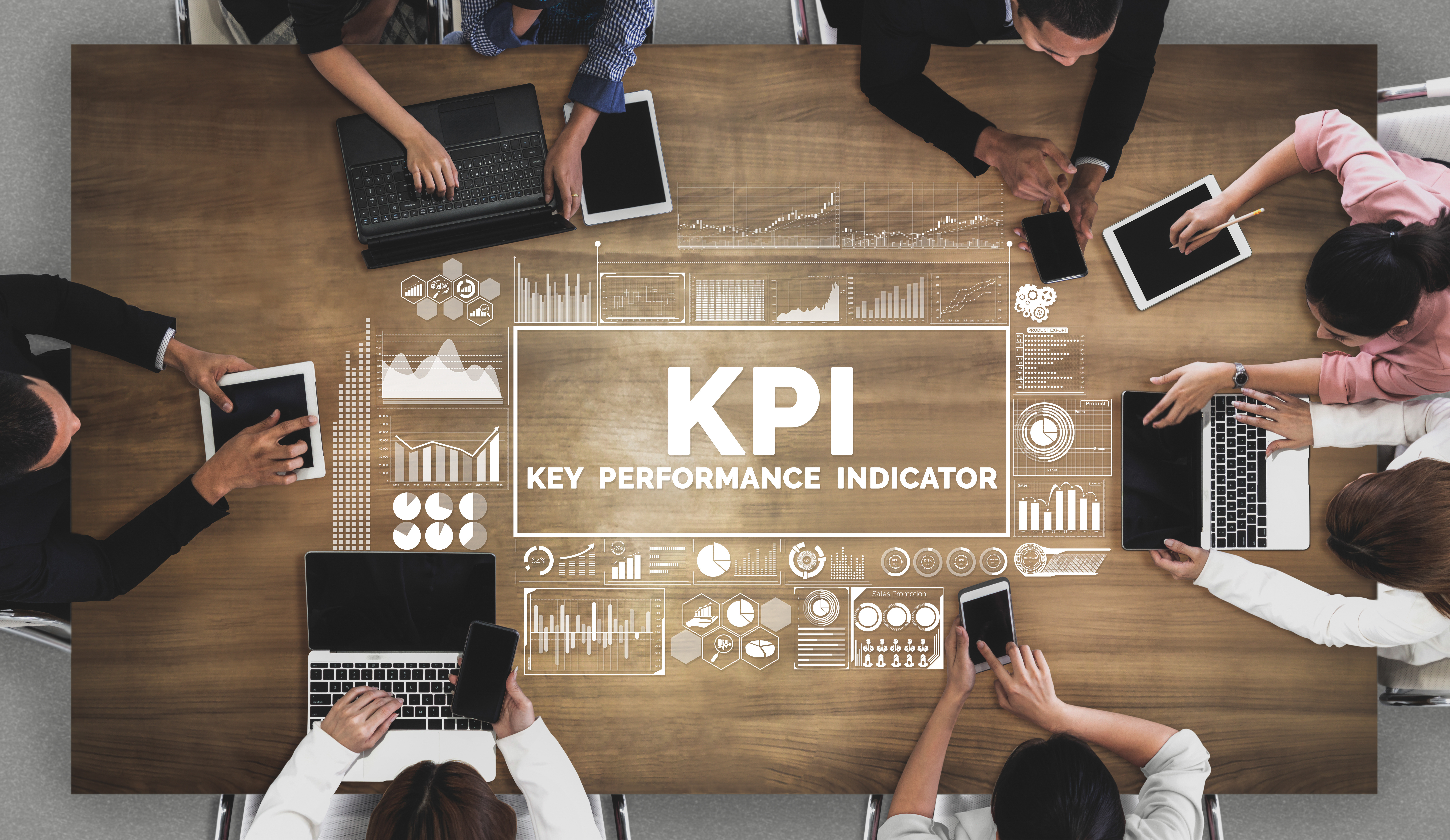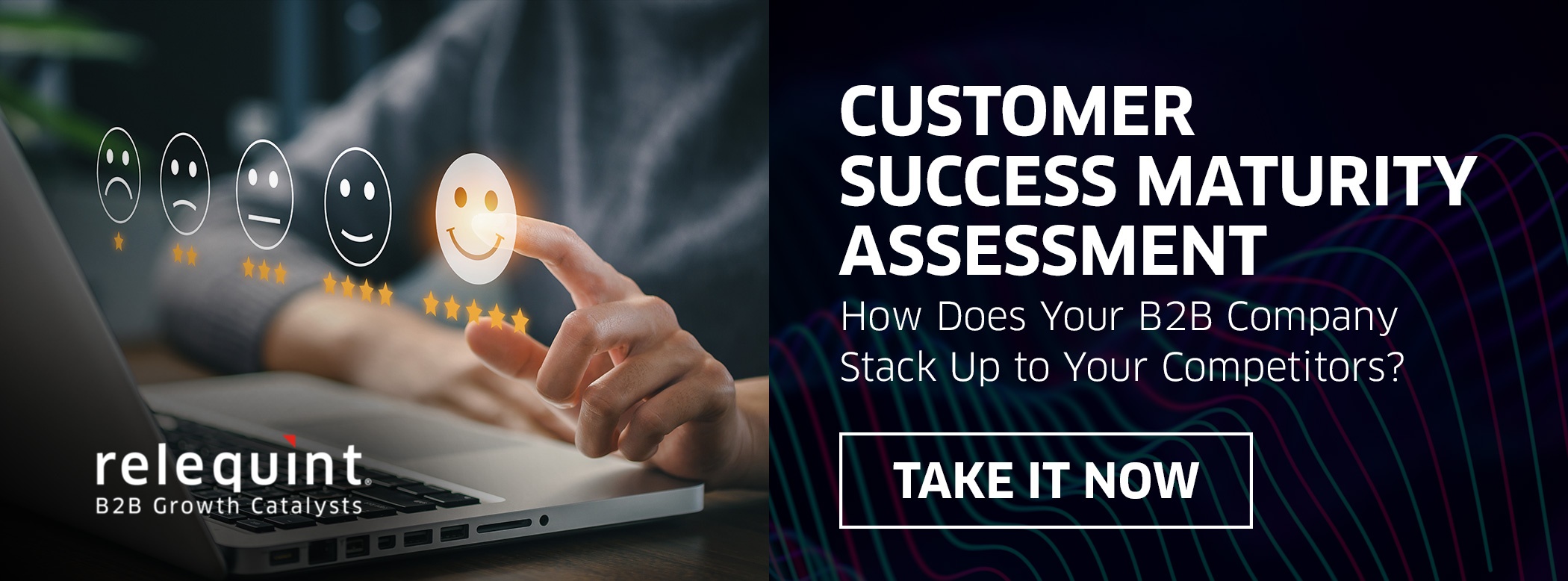In a B2B market, successful organizations will have a developed process for predicting and monitoring success. This typically involves having the right tools, processes, data analysts, and leadership in place to source and understand metrics, especially B2B Key Performance Indicators (KPIs). Data analysis is the most effective way to ensure your organization is operating efficiently, with true business intelligence.
Ensuring customer success is the best way to retain your clients and keep your revenue stable. This is often an all-hands effort, requiring support from customer success, marketing, and sales teams to create a customer experience that is consistent, positive, and productive. For this reason, many B2B organizations are adopting a RevOps approach to business, which merges these three teams into a single department - Revenue Operations (RevOps). By bringing these revenue teams together, RevOps empowers companies to work together to develop more mature strategies for sales, marketing, and customer success.
Let’s take a closer look into how best to measure customer success in RevOps by reviewing some of the top B2B KPIs for customer success.
Key Performance Indicators (KPIs) for Measuring Customer Success in RevOps
KPIs are a great way to regularly audit the performance of a given service, individual, team, or campaign. Within a RevOps model, KPIs are often shared metrics the whole department aims to reach. Specific KPIs, however, can be highly informative to spot significant issues or identify opportunities for serious gains. Data helps quantify areas of focus to create a hierarchy of needs, but it also has a qualitative benefit and will help you better connect to your customers. When you measure customer success in RevOps,
KPI 1: Customer Lifetime Value (CLV)
CLV is a core metric that demonstrates the overall value you can expect to gain from a single customer. CLV can leverage historical data, which offers a more refined result, OR you can use machine learning and advanced data models to take a more predictive approach. The simple formula for CLV is:
CLV = Customer Value x Average Customer Lifespan
Using CLV is necessary when you’re analyzing ways to scale your business. By raising your CLV benchmark, you’re committing to leveling up the value of your offerings, total number of offerings, and customer retention in a way that permanently lifts your organization. Consider improving your customer experience to expand your average customer lifespan or derive better value from upselling and cross-selling opportunities.
Calculating CLV can be challenging, especially if you have multiple offerings and payment structures (subscriptions, month-to-month contracts, one-time purchases). Having a robust analytics platform, like HubSpot, to house all of this data can shift this research from a multi-week project into a regular task.
KPI 2: Net Promoter Score (NPS)
Net Promoter Score was created in 2003 by Bain and Company and has since emerged as a gold standard in KPIs for customer success. NPS is used to track how your customers perceive you.
Using a simple, one-question survey, you will separate your customers into three categories - 1) Promoters 2) Passives 3) Detractors. This question is:
“On a scale of 0-10, how likely are you to recommend [Company Name] to a colleague or friend?”
Respondents that scored your organization a 9 or 10 fall into the Promoters category. These are your most loyal customers that present the best opportunity for referrals, reviews, and revenue expansion opportunities. These customers will, ideally, be the most vocal about your organization and have a significant impact on your reputation.
Customers responding with a score of 7 or 8 are labeled as Passives. These customers are generally happy but less likely to be singing your praises online or at a conference. Companies with a mature customer success approach will actively serve these customers to improve their perception.
If a respondent answers with a score of 6 or less, they are considered a Detractor. These clients are unhappy with their investment and are likelier to leave or even damage your brand’s reputation with negative reviews. Identifying Detractors is a great way to avoid reputation issues and gaps in your user experience, buying process, or services.
NPS can be used as a general tracker for overall customer satisfaction, or you can apply this same survey setup to specific campaigns, products, or services. To calculate NPS, you simply subtract your percentage of Detractors by your percentage of Promoters:
NPS = %Promoters - %Detractors
It’s also beneficial to add a few follow-up questions to your NPS surveys. Example questions that can give you the necessary qualitative insight to improve NPS scores include:
“Is there anything specific that [Company Name] can do to improve your experience?”
“Can you provide a few reasons for your score?”
KPI 3: Churn Rate
Your churn rate is the percentage of customers lost over a given period. When it’s such a challenge to convert customers initially, having a low churn rate is a vital way to measure customer success in RevOps. A healthy, stable customer base ensures revenue stability. The formula for calculating the churn rate is as follows:
Churn Rate = (Lost Customers / Total Customers at the Start of Time Period) x 100
Adjust the period of time you use to calculate churn rate (monthly vs. yearly customer data) based on your current offerings.
Having a low churn rate is excellent for generating higher revenue, but it also says a lot about your customer success. If you’re constantly going through clients, you may want to improve your customer success initiatives. Audit your processes from initial intake to retention tactics, and leverage other KPIs for customer success to identify what can be done better.
Heavy churn places a lot of stress on sales. In a RevOps system, problems are addressed holistically to ensure your organization can focus on the most efficient revenue-generating strategies. Sourcing and analyzing KPIs, like churn rate, is how leading organizations create and sustain their tracks toward success.
KPI 4: Customer Satisfaction (CSAT) Score
Customer Satisfaction Scores and NPS are calculated similarly but have different purposes. NPS is geared more towards perception, word-of-mouth, and customer loyalty, while CSAT focuses more on the customer’s experience “here and now.”
To calculate your CSAT score, you’ll start by conducting a survey and reviewing the responses. This survey will look like this:
“How would you rate your overall satisfaction on a scale of 1 to 5?”
1 Very unsatisfied
2 Unsatisfied
3 Neutral
4 Satisfied
5 Very satisfied
To acquire the actual satisfaction score, you will only pull data from satisfied customers (those who responded with a 4 or 5). Dividing the total number of satisfied customers by the total number of respondents will reveal your CSAT:
CSAT = [Total responses with ratings of 4 or 5 / Total number of responses] x 100
Cross-analysis of demographic and behavior-based data with CSAT results can highlight which areas of your CX are excelling and which areas could use more support.
KPI 5: Expansion Revenue
Expansion revenue, also referred to as increasing annual recurring revenue (ARR) growth, customer expansion, or monthly recurring revenue (MRR) expansion, refers to additional income from existing customers. This data does not include revenue from new customers or renewals. Expansion revenue comes from three sources:
- Upsells
- Cross-sells
- Add-ons
The formula for expansion revenue is:
Expansion revenue = (Recurring revenue at end of month - recurring revenue at the start of the month) / Recurring revenue at the start of the month
This will give you the percentage of increase or decrease your organization experienced in expansion revenue in a given month. Routinely tracking this data will help you forecast opportunities to expand your strategies, grow as an organization, or take informed risks.
Now that we’ve covered some core KPIs for customer success, we will dive into the unique dynamics of analytics in a RevOps model.
The Interplay of KPIs in a RevOps Model
RevOps instantly gives leaders a holistic view of their operations. This is a notable advantage over a traditional business model. With a clear design, RevOps can offer the best structure for gathering KPIs for customer success, marketing, and sales. That said, data analysis can be a complex process, especially if you have organizational or workflow-based roadblocks or dead-ends.
Operating within a RevOps structure is a lot like playing 3D chess. Every move you make with one arm of RevOps has a direct impact on the other two. KPIs for customer success can be key benchmarks and data points for the entire RevOps department. Keep this in mind as you develop strategies and standards to measure customer success in RevOps.
Challenges in Measuring Customer Success in RevOps
Properly defining and using B2B KPIs for customer success often comes down to data accuracy and completeness. It’s also important to factor in seasonal sales and market trends to prevent outlying data points from diluting your analysis.
When you rely on customer responses, there’s always the potential for bias and human error to cloud some of the data you collect. If you don’t have the right systems, you may also be missing out on advanced and even standard customer data.
You can save your analytics team, and anyone else trying to access data or form reports a tremendous amount of time by using a robust monitoring platform that can house ALL of your data. This will prevent data overlap, inconsistencies, and productivity loss. The best platforms will allow you to isolate precise metrics to calculate these five core customer success KPIs. Many tools are user-friendly so everyone can access key metrics, regardless of their tech-savviness.
Taking on large data projects can be a significant undertaking, especially if you don’t have the current team in place to scope out and execute the work effectively. With a true partner committed to your success as a customer, implementing RevOps and customer success best practices can be streamlined, straightforward, and effective.
Partnering with Relequint for RevOps and Customer Success
No matter where you are in your customer success journey, data shows that B2B companies can gain a significant advantage by consulting with an expert (source). Suppose you’re just starting to measure customer success in RevOps or are already adept at analyzing KPIs for customer success. In that case, you can always leverage a trusted vendor to elevate your plans. Relequint is fully committed to mastering RevOps and customer success within the B2B vertical. Our consultants will ensure your team is prepared to reach your loftiest goals and continually hit your KPIs month over month. Schedule a free consultation today!







 By
By 
